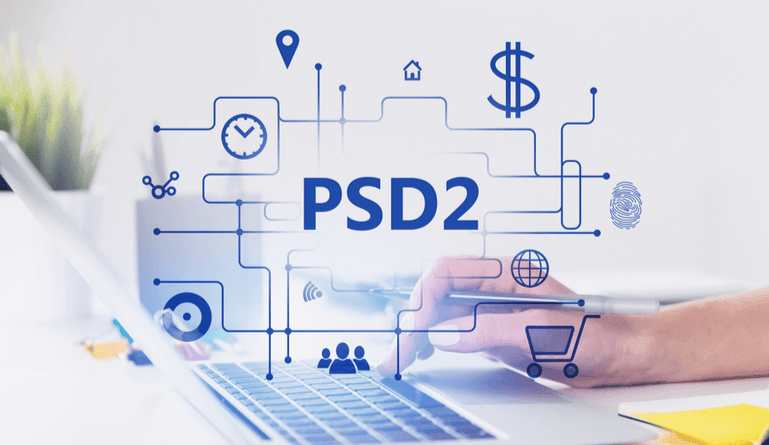One of the biggest changes in the effort to enhance consumer privacy in the last decade was the passing of GDPR or the General Data Protection Regulation. This compliance regulation went into effect in mid-2018 and while it began as a regulation meant to inform the consumers in the European Union, it has affected the way that most businesses international have had to collect data and work to inform consumers.
Similar consumer protection, again being driven by changes in the EU, is changing the way that businesses are allowed to process payments and collect payment data from customers. This regulation – the Revised Payment Service Directive, or PSD2 for short – it begins to change the way that businesses interact with customers financial information, providing better privacy and security to consumers.
What is PSD2?
Evry calls PSD2 “the directive that will change banking as we know it” and all reports indicate that they’re not exaggerating. In an effort to provide consumers with an added level of privacy and security, there will be significant changes in how payments are processed by businesses.
TransferWise explains the scope of PSD2 commerce changes by saying, “PSD2 will break down the bank’s monopoly on their user’s data. It will allow ‘merchants’, businesses like Amazon, to retrieve your account data from your bank – with your permission. That means when you buy something they can make a payment for you, without having to redirect you to another service (like PayPal or Visa). For consumers who hold more than one bank account, the changes would also allow businesses, known in the legislation as Account Information Service Providers, to display all their account information in one place for them – similar to the service offered by Mint, in the US.”
In addition to greater security, this will also offer an added benefit of convenience for customers.
Why PSD2?
The European Union still struggles to have a unified consumer market. Many EU residents note that they’re happy to conduct business in their own country. PSD2 seeks to bring in 3rd-party vendors to offer safer transactions across country borders without being concerned with various country banking regulations.
Evry notes, “The European Commission’s commitment to unify the European market for financial services is strong and it is working with several initiatives aimed at harmonizing the domestic regulations, For example, PSD2 lets third party providers of financial services operate in the entire EU as long as they are licensed by their home state’s financial authority. So even though banks still need bank licenses in each country they are operating in, the third-party providers only need one.”
The overall business and bank benefits will also include:
- Easier scaling for banks seeking to do businesses: PSD2 has the potential to make it cheaper to operate in several countries by reducing overall compliance costs and reducing the complexity of the legal framework.
- Increased business: Consumers continue to grow more confident in making purchases from international retailers. This could eventually extend to changes in consumers’ banking behavior as well.
- Better transaction transparency: Greater financial service transparency will lead to more informed consumers who, armed with information, can feel more confident making choices about purchasing and banking internationally.
- Increased competition and banking innovation: Greater transparency can ultimately level the playing field for financial institutions and will lead to an organization’s needs to find different ways to distinguish themselves in the market.
What are the major PSD2 e-commerce changes?
As far as how PSD2 will affect customer e-commerce transactions, there are several changes expected to take place.
1. More customer options
Payment and financial service options continue to increase, leading to more positive customer experiences and a greater openness to making purchases. Having the ability to pay on their terms – through options like mobile wallet payments – have encouraged more customers towards making purchases by offering more convenient checkout options. PSD2 has the possibility of opening up customer transactions across borders, giving them greater choice and flexibility.
2. More customer control
Customers will get a greater degree of control over what financial information is shared and with whom. Customers everywhere have been asking for greater control over their financial information and demanded greater privacy and security in their financial and transactional data. This PSD2 e-commerce change could lead to greater consumer confidence and better customer experiences with businesses and banking.
While the PSD2 e-commerce changes are likely to bring some stress and expense to businesses, it’s an important investment for a number of reasons. Not only will it help businesses remain compliant with privacy and payment laws, but it will also enable greater customer security. Customers who are more convinced of their security and privacy are more likely to continue engaging in commerce, which is good for the economy and the future of businesses all the way around.

